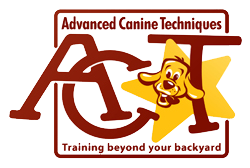I just finished watching the movie “Buck” again. I highly recommend this movie. Buck Brannaman is an amazing horse whisperer. My favorite line in the movie after he is watching a horse is, “this horse is telling me a lot about you.” And he mentions that in order to work with and help horses, you need to control your emotions.
These statements are also true for dogs. I meet with a lot of owners that are very emotionally attached to their dogs. This attachment makes it hard to provide the leadership, guidance and structure that dogs need.
I see a lot of dogs that suffer from anxiety or are fear aggressive and many times the owners have created those bad habits. They smother their dog in affection and attention and constantly soothe and pet them which creates anxiety and stress for the dog.
Dogs struggle to listen and pay attention to someone that is not balanced. Dogs require an owner that is consistent and follows through with commands and exercises.
Rather than making excuses for your dog’s bad behavior, you need to take charge and put a plan into place to help your dog be successful. I don’t believe there are stubborn dogs. I believe there are dogs that haven’t been properly motivated. As a trainer, if we can work together with the dog and their owner to achieve the same goals, we have done our job.
There are actually studies that prove these points. Studies from the University of Pennsylvania show that “helicopter” parents or doting dog moms seem to handicap their puppies. Another study shows that puppies raised with “tough love” make better guide dogs.
That doesn’t mean that dogs don’t need love and attention, however, the affection has to be offered and applied at correct times.
My challenge to all of you for the month of February is to implement a little more “tough love” into your relationship with your dog. Some examples include waiting for food, toys or petting, Crating or tethering your dog while you are home for a short time. Making time to take your dog on a structured walk where they are paying attention to you.
Take time for PLAY. Get some toys or a stick and play some fetch or tug. Or put on a long leash and harness and let your dog explore and have a good sniff in a new area.
And last but not least, practice using hand signals and body language to communicate to your dog. Don’t talk to them so much! I promise you that you will receive long lasting positive benefits from these challenges.

